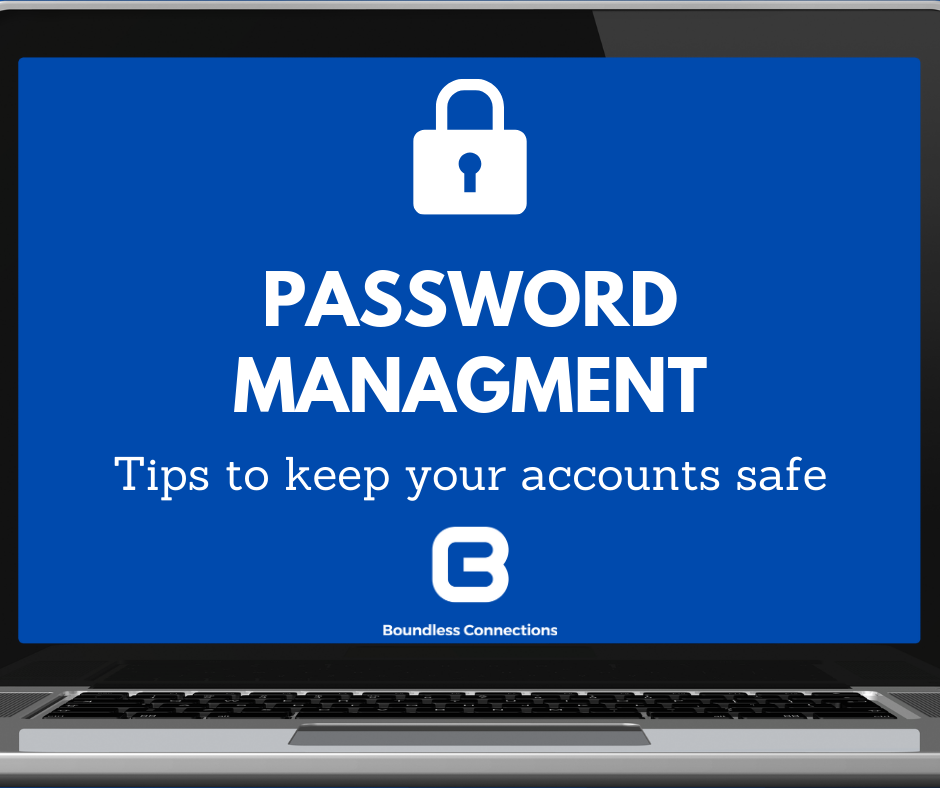
When it comes to passwords, even tech literate professionals can be stymied. With so much of our lives now locked up in digital accounts, its best to have a game plan for how to create and manage logins to keep data safe.
The longer the password, the better
Hackers use software to digitally crack your passwords. The longer your password, the longer it takes to hack. For example, if your password is only numbers (say, a birthday or anniversary), cracking it will take seconds. But, if your password is a combination of upper- and lower- case letters, numbers and special characters, your account will be much more secure.
Your password should be:
- 16 characters or more
- Combination of letters, numbers, and characters.
- Unique to that account (don’t use the same password for multiple accounts)
How to create a long, unique password
- Use a phrase you won’t forget.
- Example: I like toast (spaces count as characters)
- Jazz it up a bit.
- i LIK3 to@st (adding special characters and mixing capitalization ups the security level)
- Make it unique.
- i LIK3 TWTR to@st (abbreviate the account for the password and add it)
Now to remember it…
You’ve followed all the best practices and created long, unique, extremely secure passwords, which you will now surely forget in spite of your best efforts. Have you heard about the Bitcoin billionaires locked out of their accounts? Not cool.
You can:
- Write it down. It may seem counterintuitive, but if you’re careful and write it somewhere no one else will see (i.e. don’t leave it on a post-it on your desk at work), you’ll probably be fine. You’re much less likely to have your physical abode broken into than your digital accounts. And you don’t even need to write every password if you use a formula similar to the one above – you can write the main phrase and substitute in hashmarks for the unique identifiers.
- Example: i LIK3 #### to@st
- You may also use a notepad app on your phone to type down your phrase and then set a code or fingerprint scan to open the phone so your formula is secure.
- Example: i LIK3 #### to@st
- Use a password manager. You can search online for password managers, both free and paid. If you are using your browser to store passwords (hello, Google!) refrain from doing so on public devices, or if you must, always log out when you’re done.
Why go through the bother
Identity theft is real, and if hackers can get into one of your accounts, they’ll use the same password to try to get into more. From there, you might not only have a fake Facebook account in your name spamming your friends, it might also cost you actual money if they get hold of your full name, address, bank accounts, etc.
If you are a business owner, hackers can get into your accounts and create havoc, but they may also hold your information at ransom.
Now that you’re better informed and armed with a password plan, take the time to go change all your passwords. A little diligence will go a long way to keeping your information safe and secure.
Genius is 10% inspiration, and 90% perspiration.
Thomas Alva Edison
